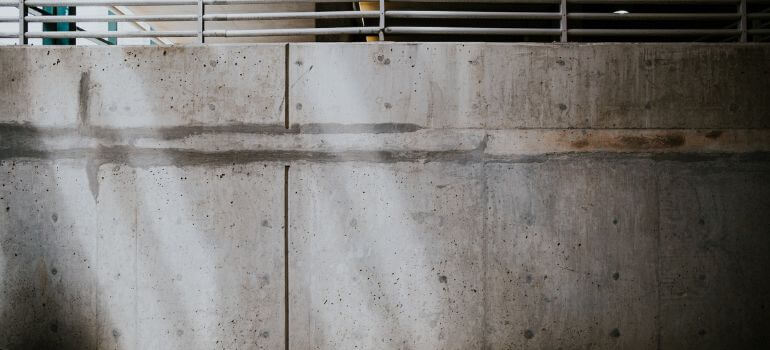When it comes to constructing a durable and long-lasting foundation for your home or building, the choice between superior walls and poured concrete is a crucial decision. Each method has its merits, and understanding the nuances can significantly impact the quality and longevity of your structure.
Understanding Superior Walls
Superior walls are precast concrete panels that offer numerous advantages in terms of strength, speed of installation, and customization. These panels are manufactured off-site, ensuring consistency and precision in their design. The installation process involves placing the panels in a predetermined order, providing a seamless foundation.
Poured Concrete: The Traditional Choice
Poured concrete, on the other hand, has been the conventional choice for foundation construction. It involves pouring concrete into forms on-site, allowing for a versatile and customizable foundation. While this method has been tried and tested, newer alternatives like superior walls are gaining popularity.
Strength and Durability
Superior Walls: The Power of Precast Precision
When it comes to the strength and durability of foundations, superior walls stand out for their remarkable characteristics. These precast concrete panels are engineered with precision, resulting in a foundation that surpasses traditional poured concrete in several aspects.
The Engineered Strength of Superior Walls
Superior walls are crafted in a controlled environment, ensuring that each panel meets stringent quality standards. The uniformity in manufacturing translates to consistent strength across the entire foundation. This precision engineering provides superior walls with an inherent advantage in load-bearing capacity.
The precast nature of superior walls eliminates the potential for variations in concrete mixtures that can occur with on-site pouring. This ensures that every inch of your foundation boasts the same high level of strength, minimizing the risk of weak points that may compromise the structural integrity over time.
Poured Concrete: The Variables in Strength

In contrast, poured concrete foundations may encounter slight inconsistencies due to the variables inherent in on-site mixing and pouring. Factors such as weather conditions, human error, or variations in raw materials can lead to subtle differences in the strength of the concrete.
While poured concrete remains a robust and time-tested choice for foundations, the potential for variations introduces a degree of unpredictability. The strength of poured concrete is dependent on various external factors, and this can impact its overall durability, especially in comparison to the precision-engineered strength of superior walls.
Weathering the Test of Time
Superior walls, with their uniform strength and durability, are designed to withstand the test of time. The precast concrete panels resist common issues such as cracking and settling, ensuring a stable foundation for years to come. The controlled manufacturing process contributes to the longevity of superior walls, making them a reliable choice for those seeking a foundation built to endure.
Poured concrete, while resilient, may be susceptible to factors such as shrinkage cracks or settling over the years. These issues can necessitate repairs and maintenance, impacting the overall durability of the foundation. The longevity of poured concrete is contingent on various external factors and the quality of the on-site construction process.
Conclusion: The Advantage of Precision in Construction
In the realm of strength and durability, the precision engineering of superior walls offers a clear advantage. The consistent strength, resistance to common issues, and longevity make superior walls a formidable choice for those prioritizing a foundation that stands strong against the test of time.
As you weigh the options between superior walls and poured concrete, understanding the nuances in strength and durability can guide you towards a decision that aligns with your construction goals and aspirations.
Installation Process
Installing superior walls is a streamlined process. The precast panels are delivered to the site, and their assembly is swift and efficient. In contrast, poured concrete requires on-site formwork, pouring, and curing, leading to a longer construction timeline.
Cost Considerations
Superior Walls vs. Poured Concrete: Unveiling the Financial Landscape
When it comes to constructing the foundation of your dreams, cost considerations play a pivotal role. The choice between superior walls and poured concrete involves a careful analysis of upfront expenses, ongoing costs, and the overall financial landscape of your construction project.
The Initial Investment: Superior Walls Precision vs. Poured Concrete Versatility
Superior Walls: Precision Comes at a Price
Superior walls, with their precision engineering and precast panels, often come with a higher upfront cost. The manufacturing process off-site ensures uniformity and quality, contributing to the precision of the final product. While this initial investment may seem steep, it’s essential to consider the advantages that come with the speed and efficiency of installation.
The quicker installation process of superior walls can translate into savings on labor costs, offsetting the higher upfront expense. It’s a trade-off where the precision of precast panels delivers efficiency in construction, potentially minimizing the overall impact on your budget.
Poured Concrete: Traditional Affordability with Some Variables
Poured concrete foundations have long been favored for their affordability. The flexibility of on-site mixing and pouring allows for cost savings in materials and labor. However, the versatility comes with potential variables that can impact costs.
Factors such as weather conditions, labor availability, and the need for formwork can introduce uncertainties into the budget. While poured concrete may have a lower initial cost, the extended construction timeline and potential for unexpected expenses should be factored into the overall financial equation.
Total Cost of Ownership: Beyond the Initial Investment
Superior Walls: Efficiency Pays Off
Superior walls shine when considering the total cost of ownership. The precision in manufacturing and swift installation contribute to a foundation that is not only durable but also requires less time and resources for construction. The reduced construction timeline can lead to savings in various areas, including temporary structures and labor.
The energy-efficient features of superior walls further contribute to long-term cost savings. The built-in insulation can translate into lower heating and cooling costs over the life of the structure, enhancing the overall financial efficiency of choosing superior walls.
Poured Concrete: Potential for Additional Expenses
Poured concrete, while affordable initially, may incur additional costs due to the extended construction period. Weather delays, the need for formwork, and potential maintenance requirements over time can contribute to a higher total cost of ownership. Homeowners should be prepared for the possibility of ongoing expenses associated with the maintenance and repair of a poured concrete foundation.
Conclusion: Balancing Precision and Affordability
As you navigate the decision between superior walls and poured concrete, understanding the cost considerations is crucial. Superior walls offer a precision-engineered solution that, despite the higher initial investment, can lead to overall cost efficiency. Poured concrete, while traditionally affordable, may introduce variables that impact the budget over the long term.
Ultimately, the choice between superior walls and poured concrete hinges on your construction priorities and financial goals. By weighing the upfront costs against the long-term benefits, you can make an informed decision that aligns with both your vision and your budget.
Energy Efficiency
Superior walls often come with built-in insulation, enhancing energy efficiency. This can lead to lower heating and cooling costs over the life of the structure. Poured concrete may require additional insulation measures, impacting overall energy performance.
Customization Options
Superior walls offer a range of design possibilities, from various textures to customized finishes. Poured concrete provides customization but may be limited in achieving intricate designs. The choice depends on the desired aesthetics of the structure.
Environmental Impact
For eco-conscious builders, superior walls may be the preferred choice due to their minimal environmental impact during manufacturing. Poured concrete, while durable, may have a larger carbon footprint due to the on-site mixing process.
Maintenance Requirements
Superior walls generally require less maintenance, thanks to their uniform construction. Poured concrete, while robust, may develop cracks or require repairs over time, depending on factors like weather conditions and soil movement.
Resale Value
Homes with superior walls often appeal to buyers seeking modern, energy-efficient construction. Poured concrete homes, while traditional, may face stiffer competition in the real estate market.
Case Studies
Consider the success stories of homes and buildings constructed with superior walls, showcasing the durability and aesthetic appeal of this method. Additionally, explore iconic structures built using poured concrete to understand its time-tested reliability.
Expert Opinions
Experts in the construction industry emphasize the importance of considering the specific needs of each project. Some may favor the efficiency of superior walls, while others appreciate the versatility of poured concrete. Consulting with professionals can provide valuable insights tailored to your unique requirements.
Which is Right for You?
Choosing between superior walls and poured concrete involves evaluating factors such as construction timeline, budget, energy efficiency goals, and aesthetic preferences. Consider consulting with a construction professional to determine the best fit for your specific project.
Conclusion
In the ongoing debate of superior walls vs. poured concrete, there is no one-size-fits-all answer. The choice depends on the unique requirements of your construction project. Whether you prioritize speed, energy efficiency, or design flexibility, weighing the pros and cons of each method is crucial for making an informed decision.
FAQs
While superior walls may have a higher upfront cost, the overall expenses, including labor, can be comparable due to the quicker installation.
Poured concrete may need occasional maintenance, such as crack repairs, depending on environmental factors and soil conditions.
Superior walls are versatile and can be adapted to various construction projects, but consultation with a professional is recommended.
Retrofitting with superior walls may be challenging, and it’s advisable to consult with an experienced contractor for feasibility.
Poured concrete may have a larger carbon footprint due to on-site mixing, making it less environmentally friendly compared to precast alternatives.



